Introduction
In the modern world of design, where well-being and connection with nature are at the forefront, blurring the lines between indoor and outdoor spaces has become a significant trend. The idea is to create seamless transitions that bring the freshness of the outdoors inside while extending the coziness of interiors to your outdoor areas. This approach not only enhances your living environment but also fosters a deeper sense of harmony with nature.
I vividly recall working on a project for a small suburban home with an attached patio. The client loved entertaining and wanted the living room and outdoor area to feel like one unified space. By introducing bi-fold glass doors, a continuous wood flooring material, and potted greenery in both spaces, the divide between indoor and outdoor almost disappeared. When the doors were open, it was as if the entire home spilled into the garden, creating a serene and inviting atmosphere perfect for gatherings.
Blurring the boundaries between indoor and outdoor areas doesn’t require a large budget or extensive renovations. Simple changes, like introducing natural materials, maximizing natural light, and incorporating greenery, can make a huge difference. These techniques not only elevate the design but also create spaces that feel larger, more inviting, and beautifully cohesive.
In this guide, we’ll explore practical and creative ways to merge the indoors with the outdoors, enhancing your home’s aesthetic and functionality. Whether you have a sprawling backyard or a small balcony, these ideas will inspire you to bring the outside in and extend the inside out.
The Perfect Design for You
Blurring the lines between indoor and outdoor spaces is ideal for anyone who:
- Wants to maximize the sense of space and create a more open, airy feel in their home.
- Enjoys being surrounded by greenery and natural elements, even while indoors.
- Loves entertaining and wants a seamless flow between indoor living areas and outdoor gathering spots.
- Seeks to enhance their home’s aesthetic while fostering a deeper connection with nature.
Imagine a dining area where a wall of sliding glass doors opens directly onto a deck, with the same table decor continuing outdoors. Or a living room with potted plants, natural textures, and furniture that looks just as at home on the patio as it does inside. These spaces feel expansive and cohesive, effortlessly blending the comforts of indoor living with the tranquility of the outdoors.
Whether you’re starting from scratch or making small updates, integrating indoor and outdoor spaces will transform your home into a haven of calm and connection.
Picture Gallery
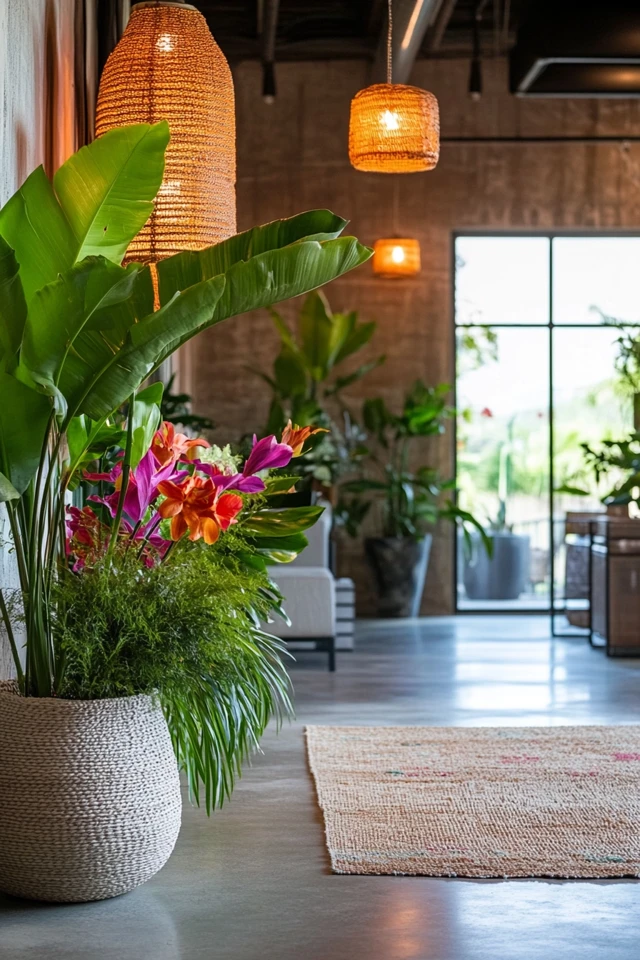
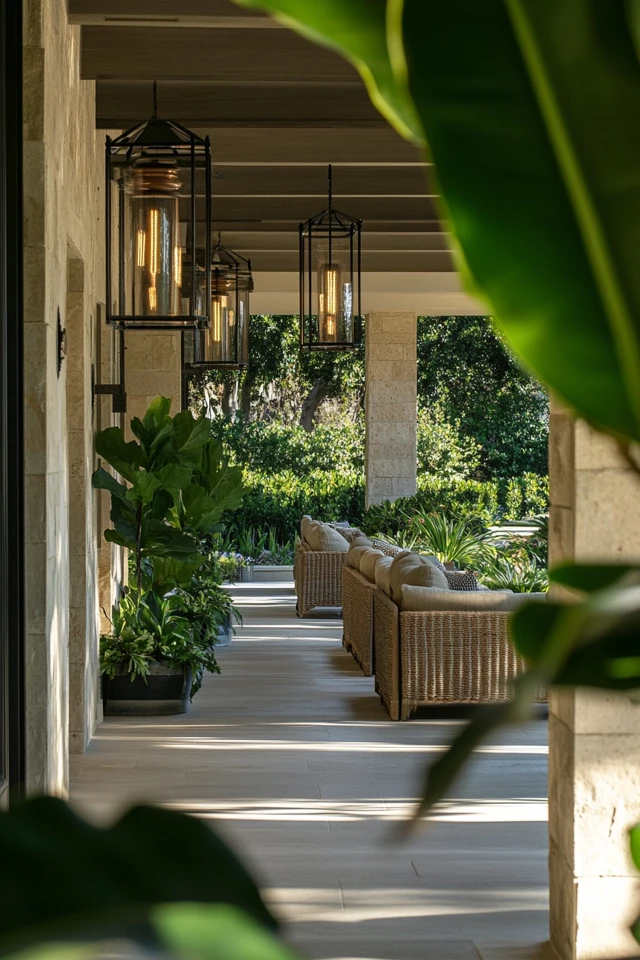

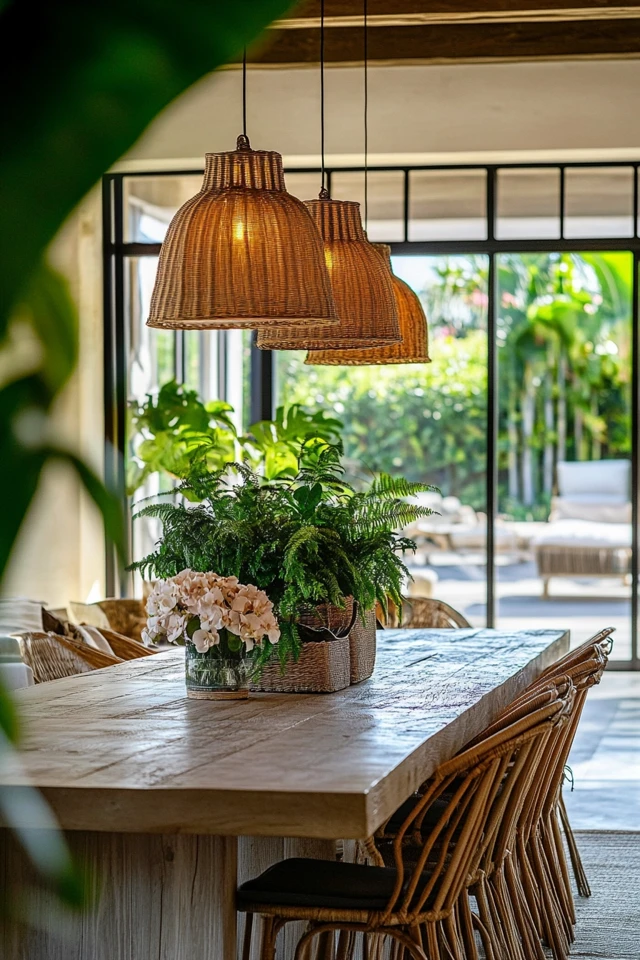
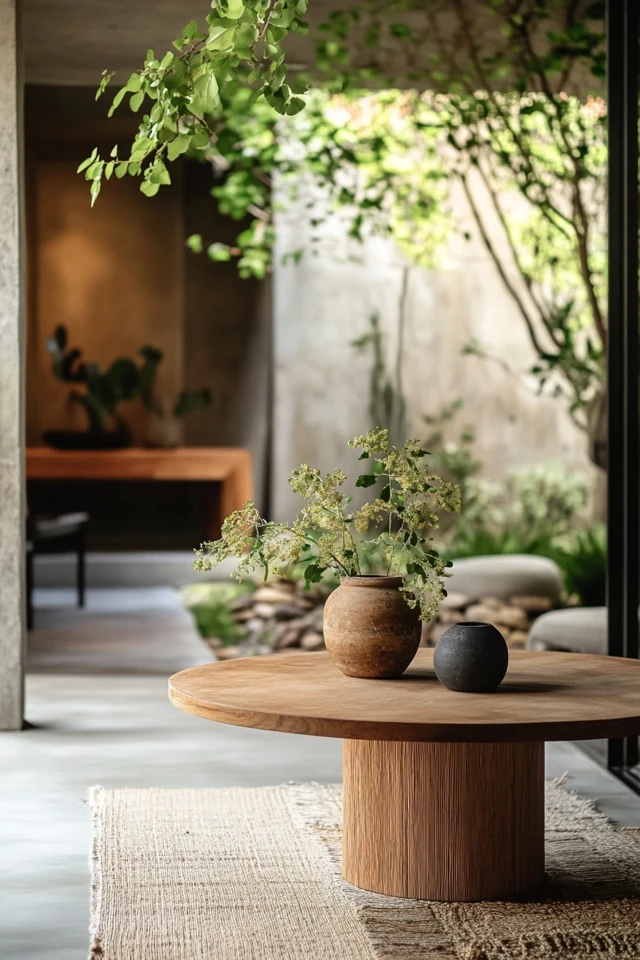
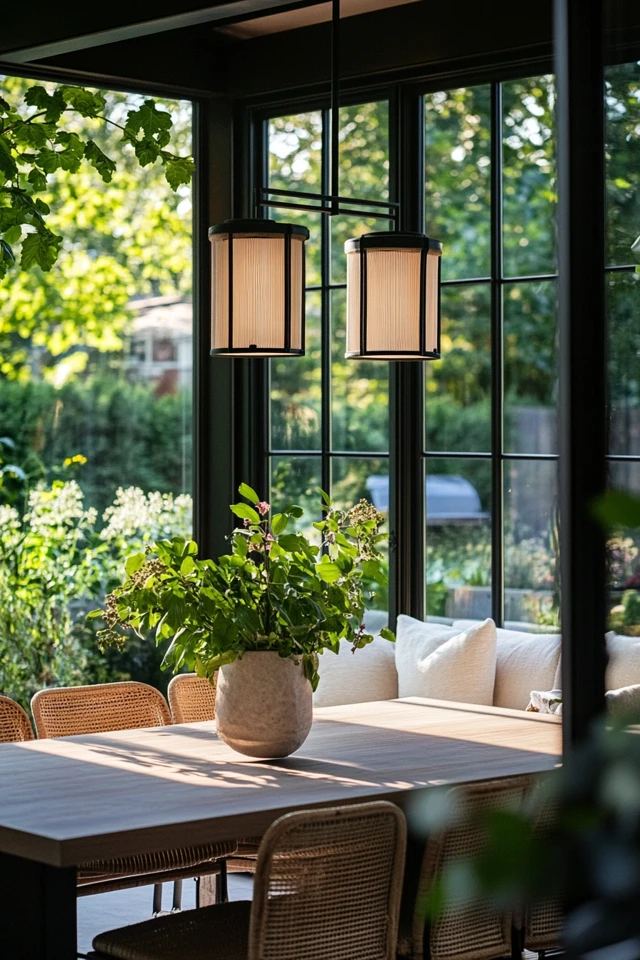
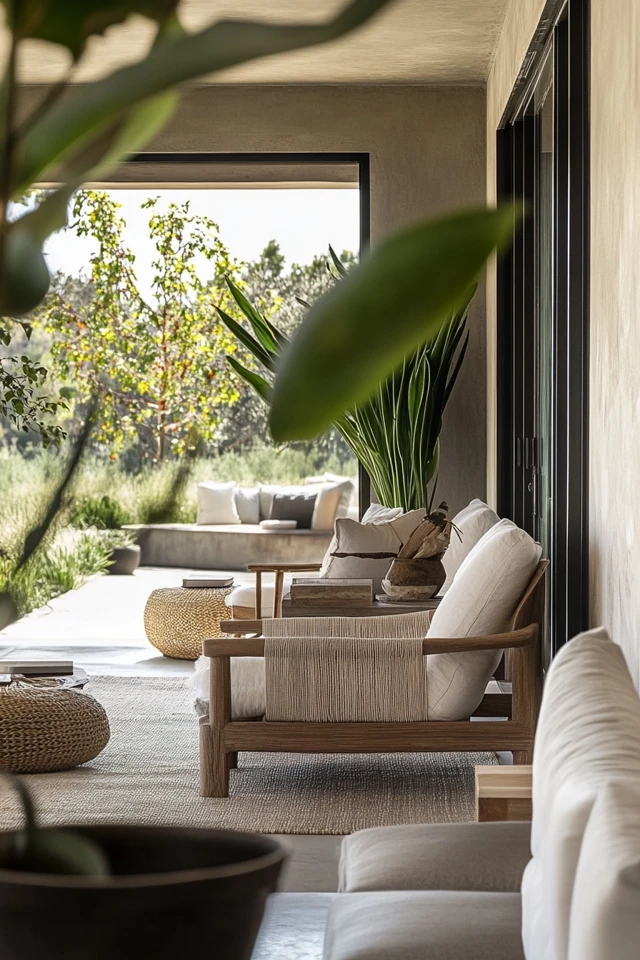
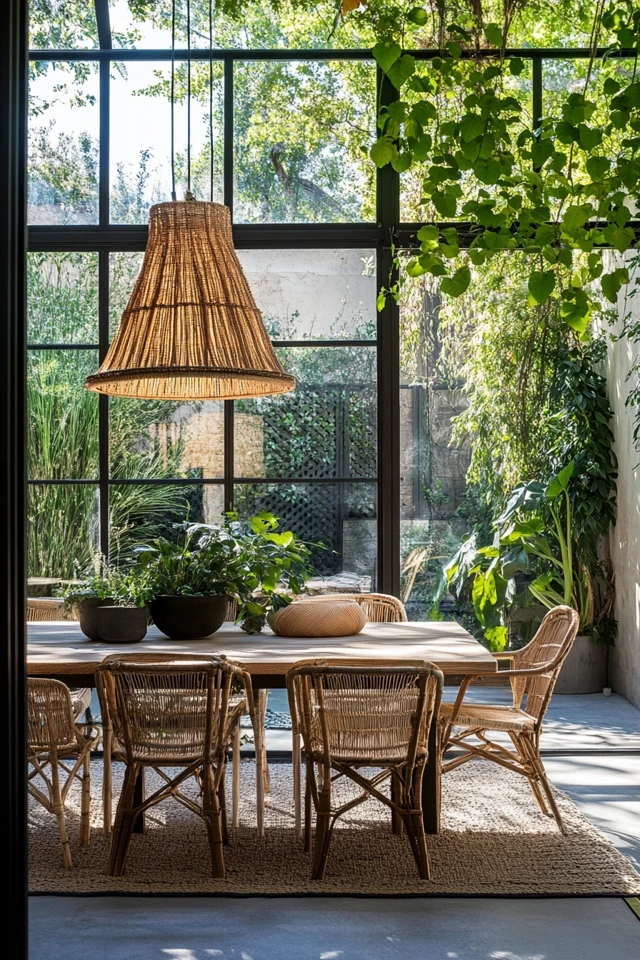
Why Blurring Indoor and Outdoor Spaces Works
Designing spaces that blur the boundaries between indoors and outdoors is more than just a style choice—it has practical and emotional benefits that enhance your home and your lifestyle. Here’s why this approach works so well:
- Creates a Sense of Spaciousness: By eliminating visual and physical barriers, your home feels larger and more open, even if your square footage remains the same.
- Enhances Natural Light: Integrating indoor and outdoor areas maximizes the flow of sunlight, brightening your interiors and reducing the need for artificial lighting.
- Promotes Well-Being: Studies show that spending time in nature reduces stress and boosts mood. Blurring these boundaries allows you to enjoy these benefits without leaving your home.
- Improves Functionality: Seamless transitions make it easier to use both indoor and outdoor spaces for various activities, from relaxing to hosting gatherings.
- Adds Visual Harmony: Carrying similar design elements across both areas creates a unified aesthetic, making your home feel cohesive and intentional.
By connecting your indoor and outdoor spaces, you not only enhance the visual appeal of your home but also create an environment that feels healthier, more inviting, and in tune with nature.
How to Blur Indoor and Outdoor Spaces: Step-by-Step
1. Incorporate Large Windows and Glass Doors
- Maximize the visual connection between indoors and outdoors with expansive glass elements:
- Install sliding, folding, or French doors that open wide to outdoor areas, creating an almost seamless transition.
- Use floor-to-ceiling windows to frame outdoor views and flood your interiors with natural light.
- These features not only blur the lines between spaces but also make your home feel more open and airy.
- Example: A kitchen with bi-fold glass doors that open directly to an outdoor dining area creates a seamless flow, perfect for al fresco entertaining.
2. Use Continuity in Materials
- Create a seamless connection by using the same or similar materials indoors and outdoors:
- Extend your interior flooring to your patio or deck, using materials like hardwood, tile, or polished concrete.
- Match your interior wall finishes with outdoor cladding for a cohesive look.
- This continuity makes it feel like the two spaces are part of the same design.
- Example: A living room with natural stone flooring that continues onto the patio blurs the boundary between indoors and outdoors.
3. Add Greenery Indoors and Outdoors
- Plants are one of the easiest ways to bring the outdoors in:
- Use indoor potted plants, hanging planters, or green walls to create a lush, natural vibe inside.
- Place similar plants outside to create a visual connection between the two areas.
- Greenery adds texture, color, and life to your design while enhancing the natural flow between spaces.
- Example: A living room with a fiddle-leaf fig tree indoors and matching potted palms just outside the glass doors creates a unified look.
4. Use Outdoor Furniture Indoors
- Incorporate furniture that feels equally at home inside and out:
- Opt for weather-resistant pieces with stylish designs, like rattan chairs or teak benches.
- Use cushions, throws, and textiles that are durable enough for outdoor use but cozy enough for indoor comfort.
- This approach ensures a seamless aesthetic and functionality across both areas.
- Example: A patio set with sleek, neutral cushions echoes the style of a nearby indoor seating area, creating a harmonious flow.
5. Design Multi-Use Spaces
- Create areas that can serve as both indoor and outdoor living spaces:
- Use covered patios, screened porches, or pergolas to extend your indoor living area outside.
- Incorporate retractable screens, awnings, or shades to adapt to changing weather conditions.
- These multi-use spaces enhance flexibility and make both areas feel like part of the same environment.
- Example: A covered patio with outdoor lighting, a fireplace, and cozy seating becomes an extension of the indoor living room.
6. Incorporate Water and Natural Elements
- Use natural features to tie indoor and outdoor spaces together:
- Add a water feature like a small fountain or reflecting pool that’s visible from both inside and outside.
- Use natural materials like wood, stone, and bamboo in both spaces for a cohesive look.
- These elements enhance the calming, nature-inspired vibe of your home.
- Example: A stone pathway that starts indoors and leads directly to a garden fountain creates a continuous design.
7. Optimize Lighting for Both Spaces
- Use lighting to connect indoor and outdoor areas seamlessly:
- Install similar light fixtures, such as lanterns or pendant lights, in both areas.
- Use warm, ambient lighting to create a consistent atmosphere across the spaces.
- Proper lighting enhances the mood and functionality of your combined spaces.
- Example: A dining table with matching pendant lights indoors and string lights outdoors feels cohesive and inviting.
8. Embrace Seasonal Decor
- Use seasonal elements to tie indoor and outdoor areas together:
- Incorporate seasonal flowers, wreaths, or throws that reflect the current season in both spaces.
- Use outdoor-friendly versions of indoor decor, like weather-resistant rugs or lanterns.
- This approach keeps both areas feeling fresh and connected throughout the year.
- Example: In fall, use pumpkins and warm-toned cushions both inside and on the patio for a cohesive seasonal look.
FAQ
1. Can I blur indoor and outdoor spaces in a small home?
Yes! Even small homes can benefit from this approach. Use techniques like large windows, sliding doors, and potted plants to create visual connections without taking up extra space.
2. What if my indoor and outdoor spaces have different styles?
Find common ground by incorporating similar colors, materials, or textures. For example, use neutral tones or natural elements to bridge the gap between styles.
3. How do I maintain privacy while integrating indoor and outdoor spaces?
Use frosted glass, curtains, or strategically placed greenery to maintain privacy while keeping the spaces connected.
4. What are the best plants for indoor-outdoor cohesion?
Opt for versatile plants like palms, ferns, succulents, and fiddle-leaf figs, which thrive both indoors and outdoors.
5. Can I blur indoor-outdoor spaces in a rental property?
Yes! Focus on non-permanent solutions like adding potted plants, matching textiles, and portable outdoor furniture to create a cohesive look.
Variations
- Minimalist Design: Use clean lines, neutral tones, and sleek materials to create a seamless, understated connection.
- Tropical Retreat: Incorporate lush greenery, bamboo furniture, and water features for an exotic, resort-inspired vibe.
- Rustic Charm: Use natural wood, stone, and warm lighting to create a cozy, earthy aesthetic.
- Modern Elegance: Blend glass, metal, and polished concrete for a sleek, contemporary look.
- Bohemian Bliss: Layer textured rugs, hanging plants, and eclectic furniture for a relaxed, artistic style.
How to Showcase It
- Living Rooms: Install sliding glass doors to connect the living room with a deck or garden.
- Dining Areas: Extend the dining table setup onto a patio for versatile entertaining.
- Kitchens: Use a pass-through window or an outdoor bar to bridge indoor and outdoor cooking spaces.
- Bedrooms: Create a private retreat with a bedroom that opens directly onto a balcony or terrace.
- Bathrooms: Blur boundaries with an outdoor shower or a freestanding tub next to a large picture window.
Occasions to Feature It
- Everyday Living: Enjoy seamless indoor-outdoor transitions for daily relaxation and activities.
- Entertaining Guests: Host gatherings that flow effortlessly between your home and garden.
- Seasonal Decor: Refresh your spaces with coordinated seasonal elements.
- Special Occasions: Create memorable settings for parties, dinners, or celebrations.
- Weekend Retreats: Turn your home into a peaceful sanctuary that feels connected to nature.
Conclusion
Blurring the lines between indoor and outdoor spaces is a transformative design strategy that enhances your home’s aesthetic, functionality, and connection to nature. By incorporating features like large windows, continuous materials, greenery, and seamless furniture, you can create spaces that feel open, cohesive, and inviting.
Whether you’re revamping a single room or reimagining your entire home, these ideas will help you bring the best of both worlds together. So, embrace the beauty of integrated design, and watch as your indoor and outdoor spaces merge into a harmonious, nature-inspired sanctuary!


